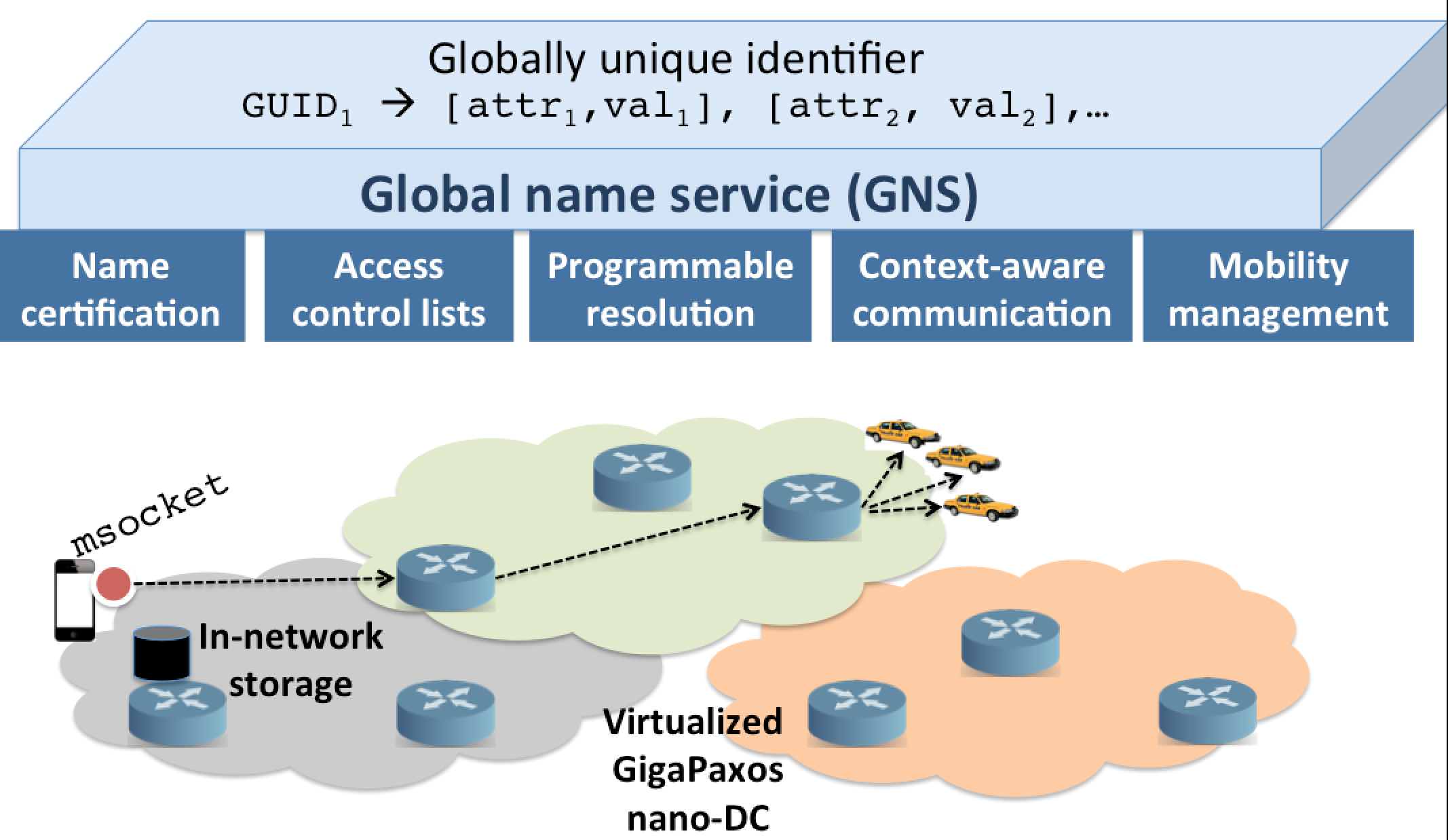
MobilityFirst is a "future Internet architecture" with mobility and trustworthiness as central design goals. Mobility means that all endpoints - devices, services, content, and networks - should be able to frequently change network attachment points in a seamless manner. Trustworthiness means that the network must be resilient to the presence of a small number of malicious endpoints or network routers. MobilityFirst enhances mobility by cleanly separating names or identifiers from addresses or network locations, and enhances security by representing both in an intrinsically verifiable manner, relying upon a massively scalable, distributed, global name service to bind names and addresses, and to facilitate services including device-to-service, multicast, anycast, and context-aware communication, content retrieval, and more. A key insight emerging from our experience is that a logically centralized global name service can significantly enhance mobility and security and transform network-layer functionality. Recognizing and validating this insight is the key contribution of the MobilityFirst architectural effort. [Overview paper | code | Updated project page coming soon!]
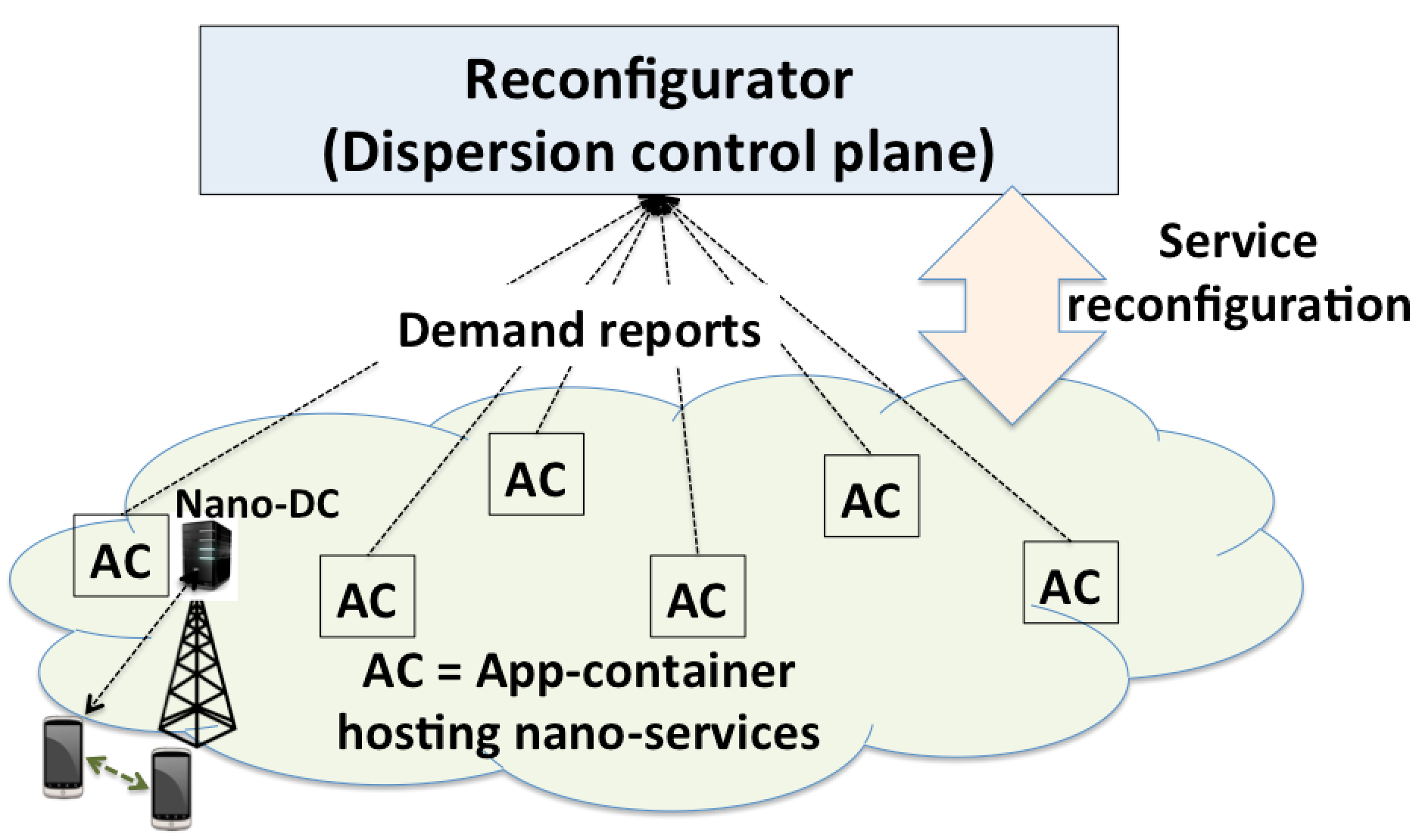
GigaPaxos is a novel system for group-scalable state machine replication. Group scalability refers to the ability to easily manage a very large number of different reconfigurable consensus groups, one for each lightweight fault-tolerant principal as small as a single record in a key-value store or an ephemeral service replica created on the fly each end-user. GigaPaxos drives down the marginal memory overhead of a Paxos group to under 400 bytes while keeping the messaging overhead, throughput, and latency of each group independent of the total number of groups and comparable to or vastly better than state-of-the-art consensus systems. Compared to state-of-the-art consensus systems that only sustain up to tens or hundreds of consensus groups on commodity machines, GigaPaxos can easily support millions of Paxos groups; furthermore, it can support billions or more groups, limited only by the persistent storage on each machine, with a small latency penalty that is negligible in geo-distributed settings. GigaPaxos is especially useful for building fluidly replicable personal cloud services. [Technical report | code ]
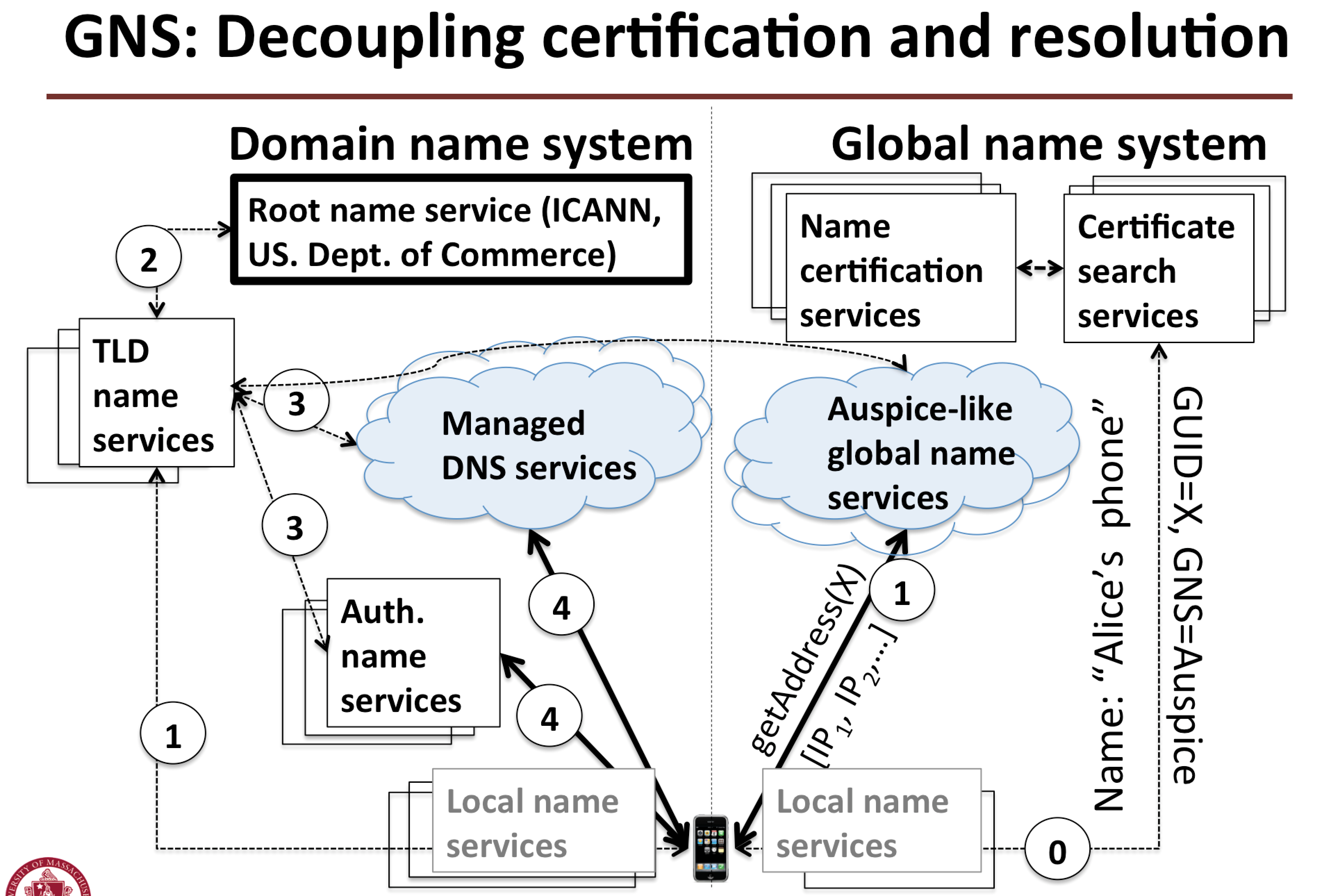
GNS: Mobile devices dominate the Internet today, however the Internet rooted in its tethered origins continues to provide poor infrastructure support for mobility. In order to address this problem, a key challenge that must be addressed is the design of a massively scalable global name service that rapidly resolves identities to network locations under high mobility. The GNS is a next-generation global name service that addresses this challenge. A key insight underlying the Auspice GNS is a demand-aware replica placement engine that intelligently replicates name records to provide low lookup latency, low update cost, and high availability. The GNS handily outperforms several commercial managed DNS providers as well as state-of-the-art research alternatives. We have demonstrates proof-of-concept that Auspice can serve as a complete end-to-end mobility solution; enable novel context-based communication primitives that generalize name- or address-based communication in today’s Internet; enable programmability in the name resolution plane; and enhanced security and privacy. [Paper | code ]

Contextual communication is a group communication abstraction that generalizes name- or address-based communication to arbitrary attributes. Our position is that a universal primitive such as send(msg, [lat, long, radius]) to send a message to a geofenced context or other contexts based on more general attributes can significantly simplify app development by relieving the developer from having to manage dynamically changing group membership. We are developing the Contextual Notification System (CNS) in order to realize this vision in a scalable and privacy-preserving manner for a number of public safety as well as other application domains. [Project page coming]
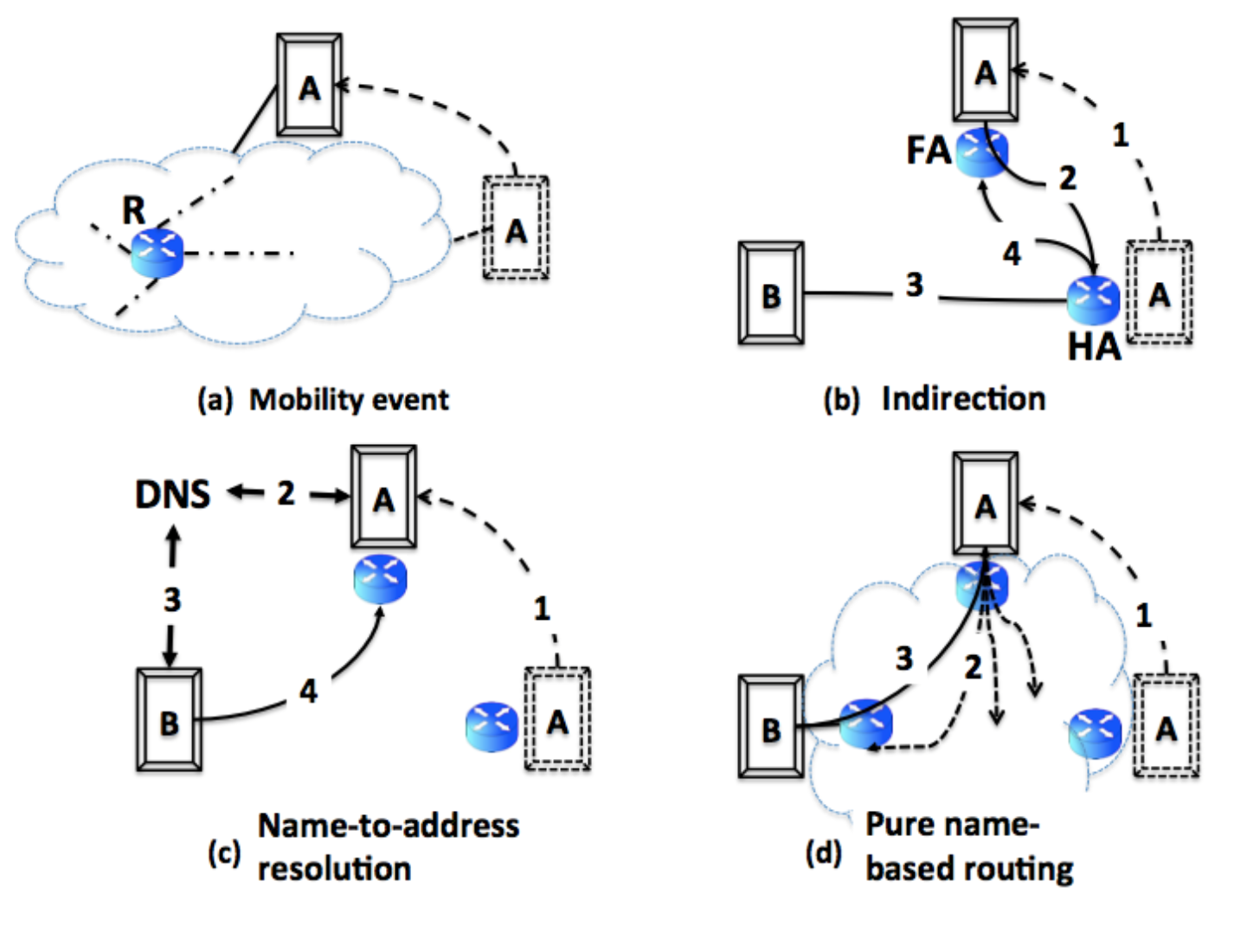
Internet architecture evaluation: In recent years, the question of a clean-slate or next-generation Internet architecture has received much attention from networking researchers. This project is motivated by the observation that, although a number of new and different Internet architectures have been proposed, there has been little prior research on quantitatively comparing the different tradeoffs struck by these different architectures, especially when they share overlapping high-level goals. Network architecture is largely considered part science and part art. Neverthelesse, our position is that developing quantitative approaches to compare and contrast the pros and cons of different architectural choices is critical to gaining a deeper understanding of cross-cutting architectural principles. [Paper | Project page coming]
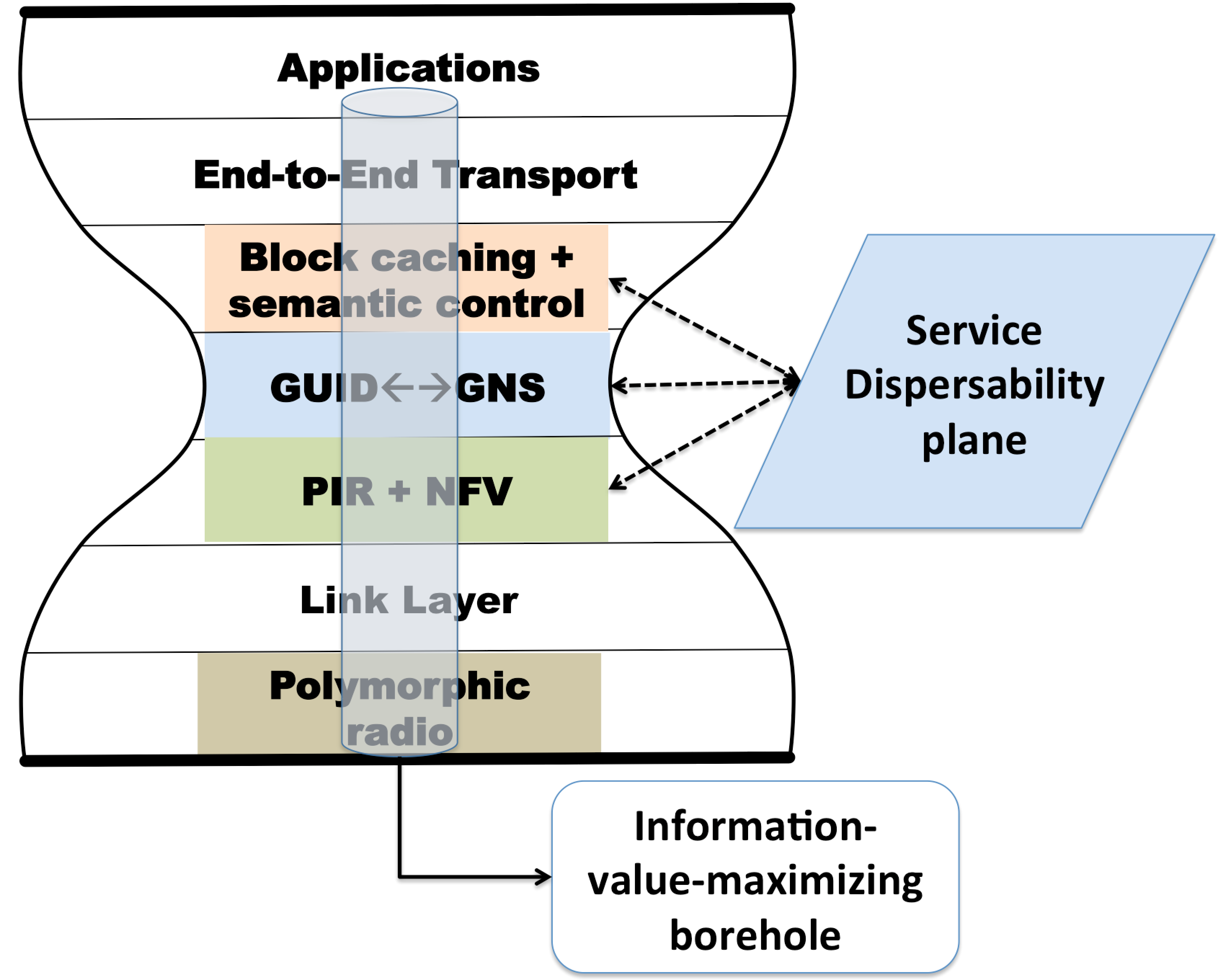

Light-Speed Networking (LSN): A key hurdle for next-generation
mobile and wireless applications such as autonomous vehicle safety,
tactile Internet, virtual and augmented reality, industrial robotics,
telesurgery, etc. is ultra-low information response time (IRT) as
these applications continue to see significant improvement in
user-perceived experience all the way down to an IRT as low as a
millisecond. Unfortunately, today's Internet protocol stack, despite
the rather ambitious projections of what "5G" ought to be by 2020, is
a far cry from achieving a 1ms common-case IRT in wireless
environments. A fundamental bottleneck for reducing IRT is propagation
delays limited by the speed of light as well as a variety of factors
across the protocol stack.
This project is investigating the design, implementation, and
evaluation of a “light-speed networking” (LSN) architecture seeking to
dramatically reduce IRT in wireless edge networks by incorporating
information-centrism holistically across the different layers of the
network protocol stack. Information-centrism means that named content,
services, devices, or groups thereof (as opposed to IP addresses)
fundamentally drive the network’s actions. An important capability
that LSN enables is for the network to automatically migrate a remote
service endpoint close to the end-user, for example, on to a
nano-cloud on a virtualized base station, thereby cutting down
propagation delays limited by the speed of light. LSN combines this
capability with several other novel ideas including
information-value-awareness: enabling different layers to leverage
application-level knowledge about the value and semantics of the data;
private information retrieval: enabling users to access information
without revealing what they are accessing to the network; radio
polymorphism: enabling intelligent use of different radios based on
information value; access-point-centric security and privacy
enhancements; etc. LSN builds upon key ideas from recent
next-generation Internet architecture projects including MobilityFirst
and XIA.
[Project page coming]